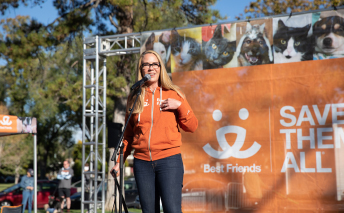Best Friends Animal Society and the No-Kill Nation Goal
A Mission of Compassion and Change
In the heart of America’s animal welfare movement, one organization has dared to dream bigger and bolder than any before: Best Friends Animal Society. Under the pawesome leadership of CEO Julie Castle, the organization has transformed what was once considered an impossible ambition — the creation of a No-Kill Nation — into a goal within reach. With 2025 now underway, that goal is no longer an aspiration, but rapidly becoming a reality.
The concept of a “No-Kill Nation” can be easily misunderstood. Rather than suggesting that every single animal can or should be saved, the benchmark is 90%—a humane, data-driven threshold that acknowledges both the limits of veterinary science and the tragic realities of abuse and untreatable illness. As Julie Castle herself explains, this standard is both practical and compassionate. It ensures that shelters are not judged by unrealistic expectations, but by their efforts to save every healthy and treatable animal in their care.
Julie’s rallying cry began in 2016, when she publicly declared that the United States would achieve No-Kill status by 2025. Critics scoffed, calling it an impossible feat. But Julie, ever the determined maverick, saw it differently. Backed by the values of Best Friends Animal Society and a network of passionate animal advocates, she launched one of the most ambitious efforts in the history of animal welfare.
Since then, the numbers have spoken for themselves. From 17 million shelter deaths in per year in 1984 to approximately 415,000 today, the decline is nothing short of revolutionary. That progress has been fueled by a combination of technology, coalition-building, and grassroots mobilization. Best Friends created data-sharing platforms, invested in infrastructure, and launched national campaigns that transformed awareness into action.
A defining moment came in early 2025 when a wildfire ravaged Los Angeles, overwhelming shelters and threatening countless animal lives. Best Friends’ nationwide network sprang into action, relocating more than 1,700 animals within days. The response underscored the strength of a decentralized, collaborative system—a philosophy that Julie has championed from the beginning. In her world, no shelter is too small, no community too remote to be part of the solution.

But while Julie and her team have made monumental strides, challenges persist. A surge in pet purchases from breeders and online platforms has taken place in recent years. Yet even here, glimmers of hope remain. In cities like Chicago and Nashville, shelters are seeing record adoption rates, particularly for cats, suggesting that awareness campaigns are once again resonating.
The No-Kill movement is about more than hitting a number. It’s a cultural transformation—one that reimagines the role of shelters, prioritizes preventive care over crisis response, and champions the idea that animals are family. Best Friends is already working with architects and urban planners to redesign shelter spaces that reflect this philosophy, creating environments filled with natural light, mental stimulation, and opportunities for meaningful human-animal connection.
And when the No-Kill Nation goal is reached this year, that doesn’t mean the work will stop. Instead, it will evolve. The focus will shift from saving lives in crisis to preventing animals from ending up in shelters in the first place. Education, community engagement, and accessible veterinary care will form the bedrock of the next generation of animal welfare.
Julie Castle’s leadership is a testament to what’s possible when vision meets heart. She’s not building an empire—she’s building a legacy of compassion. If she has her way, every shelter in America will follow suit. And if that happens, her greatest wish may come true: that Best Friends Animal Society will have worked itself out of a job, to only help start a new, more compassionate movement toward what can only be called animal equality.
For more information, visit bestfriends.org




